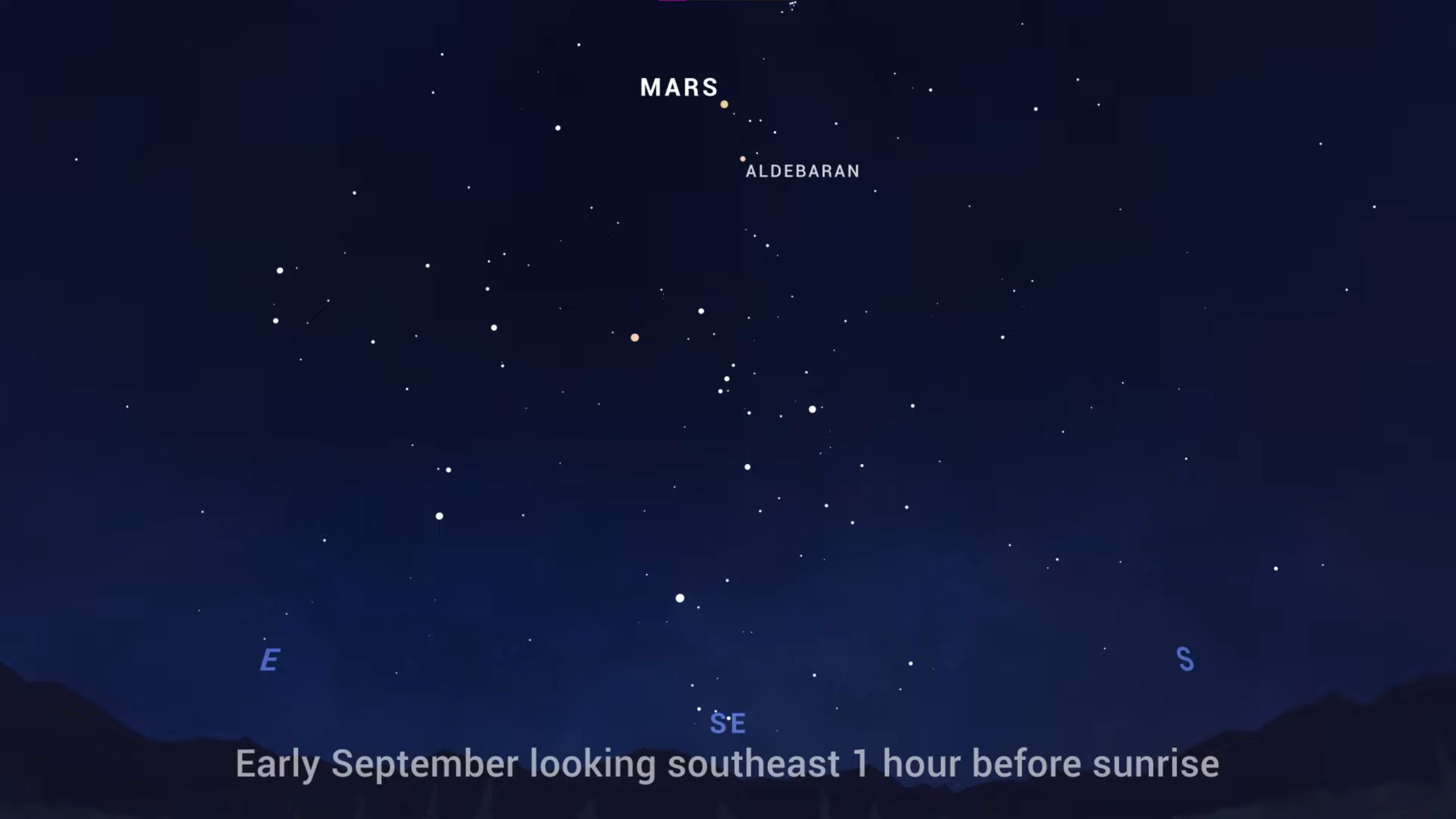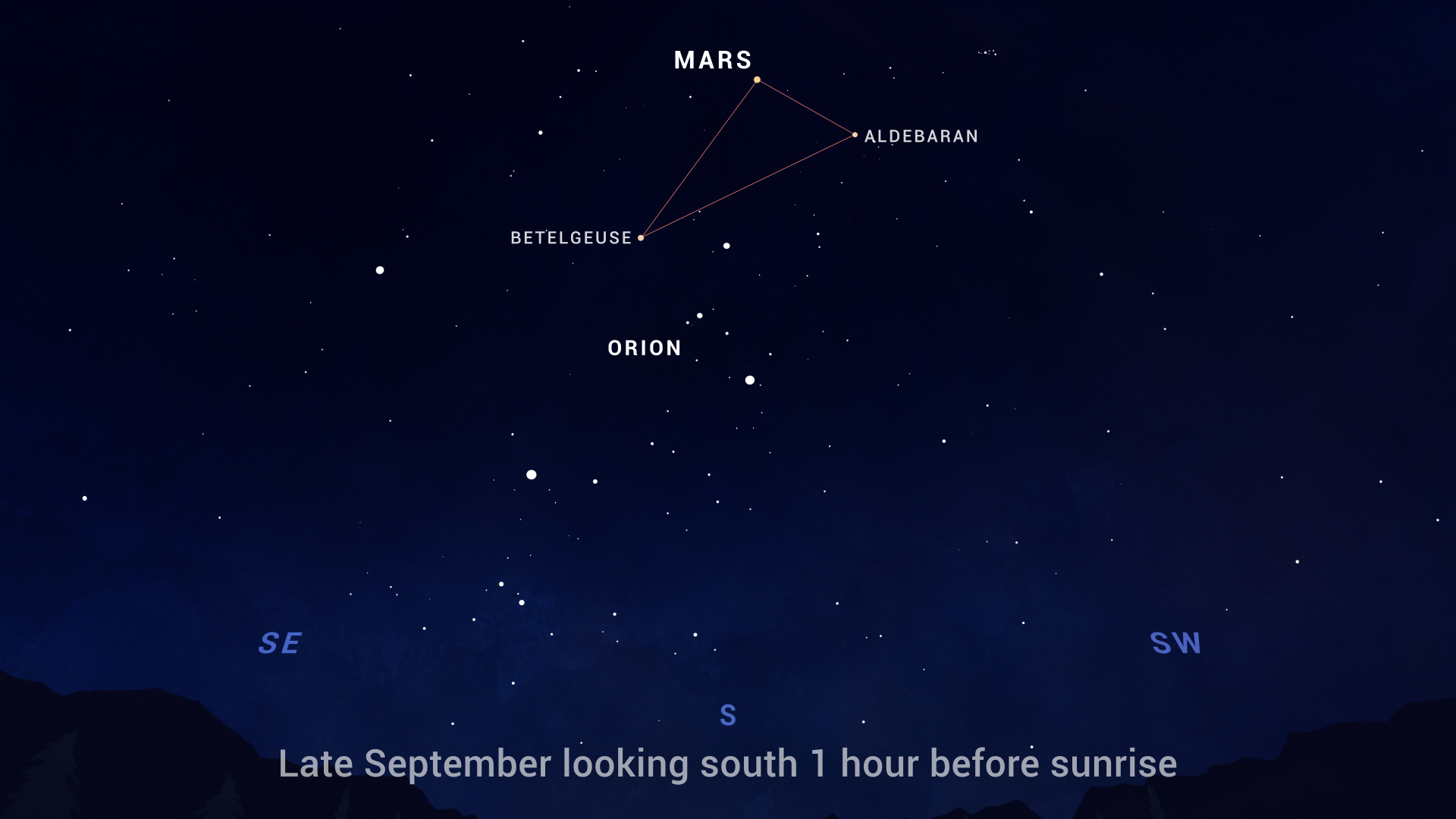Catch Mars near the bright star Aldebaran Tuesday night (Sept. 6)
You can see Mars near the bright star Aldebaran, the eye of Taurus the bull, Tuesday night (Sept. 6).

You can see Mars near the bright star Aldebaran, the eye of Taurus the bull, Tuesday night (Sept. 6).
Aldebaran is the brightest star in the Taurus constellation. It will appear nearest Mars late Tuesday into Wednesday morning (Sept. 7). The pair will be visible high in the south before sunrise, according to the NASA Jet Propulsion Laboratory's September viewing guide.
During September, Mars rises about three and a half hours after sunset and is near the meridian at dawn. While the Red Planet is closest to orange-colored Aldebaran early in the month, it will soon begin moving eastward toward another bright star named Betelgeuse.
Related: Night sky, September 2022: What you can see tonight [maps]

Looking for a telescope to see Mars or Aldebaran? We recommend the Celestron Astro Fi 102as the top pick in our best beginner's telescope guide.
Aldebaran is a red giant star about 44 times bigger than our sun and located about 65 light-years away. It varies in brightness between magnitude 0.75 and 0.95, making it visible to the naked eye. Aldebaran is believed to host at least one exoplanet several times bigger than Jupiter. As Mars moves away from Aldebaran and toward Betelgeuse, the trio forms a "red triangle" in the morning sky.
"Then the Red Planet will appear to hit the brakes and halt its eastward motion, to hang out in that triangle for the next month or so," NASA wrote in their September viewing guide.
Betelgeuse is also a red supergiant and one of the largest stars visible to the naked eye. It is usually the tenth-brightest star in the night sky and the second-brightest star in the constellation of Orion with a magnitude of 0.58.
Breaking space news, the latest updates on rocket launches, skywatching events and more!
You can check out our guides for the best binoculars and the best telescopes to spot Mars and the bright stars Aldebaran and Betelgeuse. If you're hoping to capture a good photo of the Red Planet, check out our recommendations for the best cameras for astrophotography and best lenses for astrophotography.
Editor's Note: If you snap a photo of Mars near Aldebaran and would like to share it with Space.com's readers, send your photo(s), comments, and your name and location to spacephotos@space.com.
Follow Samantha Mathewson on Twitter @Sam_Ashley13. Follow us on Twitter @Spacedotcomor on Facebook.

Samantha Mathewson joined Space.com as an intern in the summer of 2016. She received a B.A. in Journalism and Environmental Science at the University of New Haven, in Connecticut. Previously, her work has been published in Nature World News. When not writing or reading about science, Samantha enjoys traveling to new places and taking photos! You can follow her on Twitter @Sam_Ashley13.

